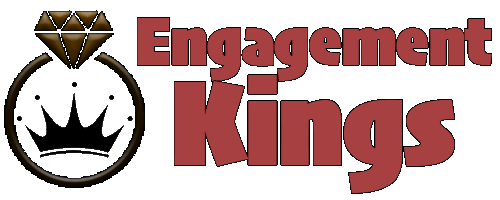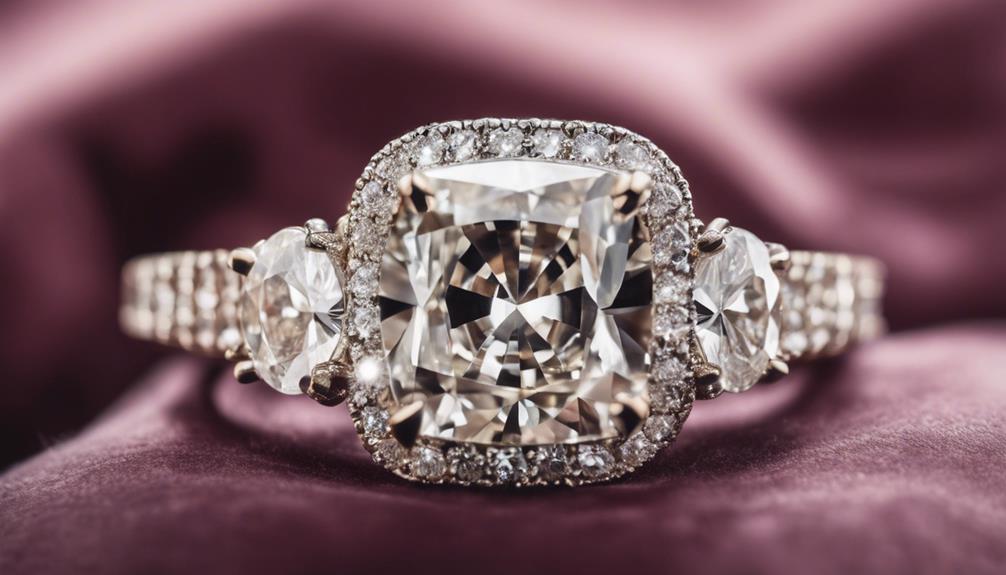The best carat for an engagement ring comes down to balancing your budget, style, and lifestyle. In the U.S., the average is around 1.5 carats. If working within a budget, a one-carat diamond is popular, costing between $4,000 and $5,000. Those with active lifestyles might prefer half to one-carat stones for durability. Alternatively, larger carats like two or three offer exclusivity but start at $15,000. Remember, a smaller carat with a high-quality cut can magnify brilliance and size perception. Explore how choices like this can make a significant impact on your perfect ring’s appearance and value.
Understanding Carat Weight
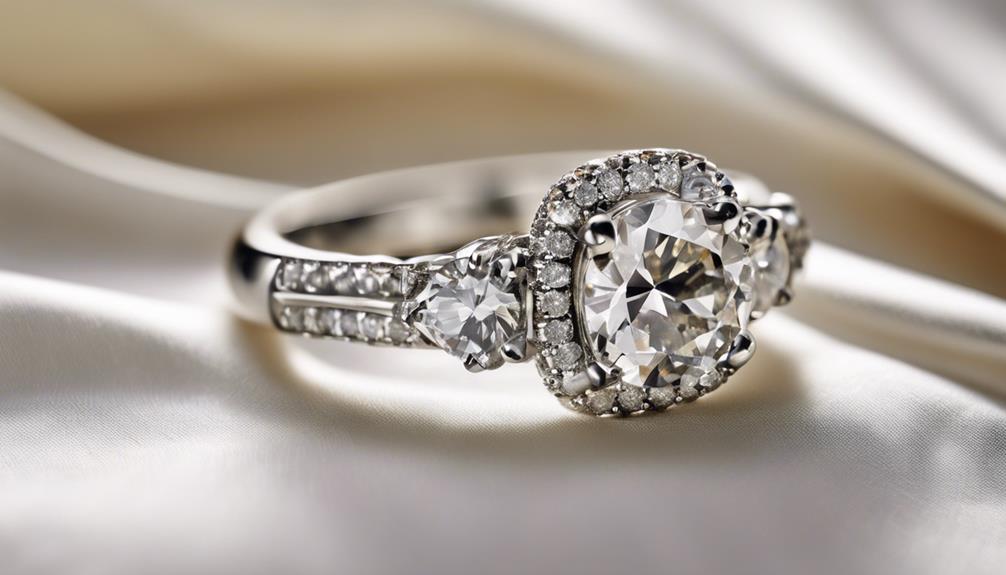
When you’re shopping for an engagement ring, understanding carat weight is fundamental. Carat weight measures the diamond’s heft, with 1 carat equaling 0.2 grams.
It’s important to remember that carat weight and diamond size engagement ring dimensions aren’t always directly related. Different shapes can present varying visual sizes at the same carat weight.
In the U.S., the average carat size for engagement rings hovers around 1.5 carats. However, choosing the ideal carat size is subjective and hinges on personal preference and budget. Some couples lean towards the elegance of a smaller carat, which often allows for better clarity and color.
Others might prefer the bold statement of a larger carat, understanding that diamonds over 1.00 carat typically command higher prices.
The sparkle of a well-cut diamond is essential, as it enhances the stone’s appearance regardless of its carat weight. A well-cut diamond can make a smaller carat appear larger and more dazzling.
As a result, while carat weight is a significant factor, don’t overlook the importance of cut quality to guarantee your diamond truly shines.
Popular Carat Sizes
Choosing the right carat size for an engagement ring is a personal decision influenced by style, budget, and trends. In the U.S., the average carat size hovers around 1.5 carats, with many selections falling between 1 and 2 carats.
Among these, one-carat diamonds stand out as the most popular choice, typically priced between $4,000 and $5,000 for high-quality stones. They’re considered an ideal size for many, striking a balance between presence and affordability.
If you’re considering a more budget-friendly option, a half-carat diamond might be perfect. These cost about $1,000 and still provide a delightful sparkle.
On the other hand, diamonds ranging from 1.25 to 1.50 carats are gaining popularity, thanks to celebrity influence and shifting consumer preferences.
Here’s a quick breakdown:
- One Carat: Most popular, blending size and cost.
- Half-Carat Diamond: Budget-friendly with great sparkle.
- 1.25 to 1.50 Carats: Trending upwards due to style influencers.
For those seeking a statement piece, larger carat weights, such as 2 or 3 carats, offer exclusivity but at a higher cost, starting around $15,000 for a quality stone.
Balancing Carat With Budget
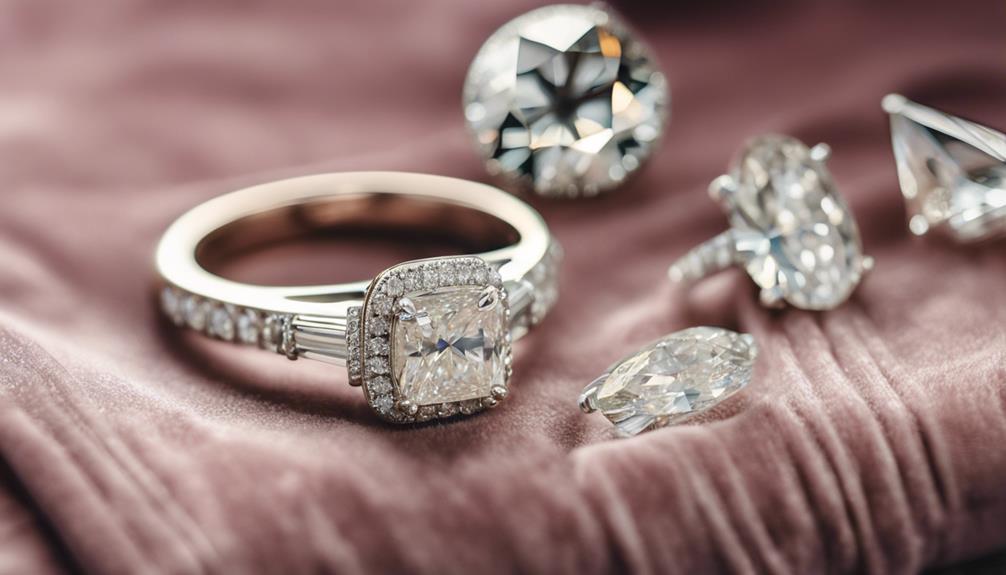
Finding the perfect balance between carat size and budget requires thoughtful consideration of your priorities. When choosing a diamond for an engagement ring, understanding how carat sizes align with your financial plan can make all the difference.
The average engagement ring in the U.S. features a 1.5-carat diamond, but you don’t have to follow the trend if it doesn’t fit your budget. A half-carat diamond offers a budget-friendly option at around $1,000, providing plenty of sparkle without breaking the bank.
If you’re set on a one-carat diamond, aim for a budget of $4,000 to $5,000 to guarantee you get a quality stone. Remember, prices climb steeply with larger carats. For instance, a two-carat diamond can set you back $15,000 to $17,000, reflecting its rarity and appeal.
Don’t overlook the potential of smaller diamonds. They allow you to focus more on the other Cs—cut, color, and clarity—without overspending. Additionally, exploring diamond cuts like emerald or oval can give smaller carat sizes a larger appearance, helping you achieve the look you desire while staying within budget.
Balancing these elements guarantees your ring perfectly symbolizes your unique journey.
Considering Lifestyle Factors
Lifestyle choices play an essential role in selecting the ideal carat size for an engagement ring. If you lead an active lifestyle, you might want to take into account opting for smaller diamonds. These typically range from 0.5 to 1.0 carats, providing durability and minimizing the risk of damage during everyday activities.
A 1.0 carat diamond, measuring about 6.5mm in diameter, offers a great balance between visual impact and practicality, especially if your routine involves a lot of hands-on tasks.
When evaluating the ideal diamond size for engagement rings, think about your personal style and how it aligns with your daily habits. Here are three key factors to help you decide:
- Activity Level: If you’re constantly on the move, smaller diamonds are less likely to snag and promote comfort during wear.
- Style Preferences: If you have a taste for elegance without excess, diamonds under 1.0 carat can offer high clarity and color within your budget.
- Hand Size: A carat size of 1.5 or smaller can complement your hand’s proportions, making sure the ring doesn’t feel overwhelming.
Enhancing Carat With Cut
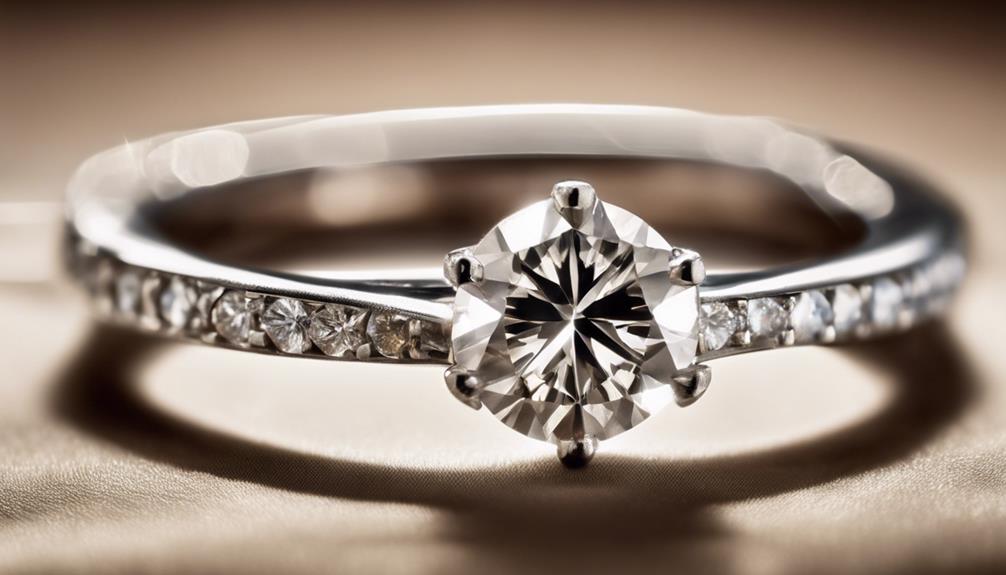
While considering lifestyle factors helps in selecting the right carat size, you can also enhance the diamond’s presence through its cut. A well-cut diamond can make a significant difference in how large and brilliant the stone appears.
Even if you’re opting for smaller diamond sizes, a superior cut can make your diamond look larger and more sparkling than one that’s poorly cut. For instance, an emerald cut can give the illusion of larger diamonds due to its elongated shape, creating a striking impact without needing an oversized carat.
You might also consider a halo setting to boost the diamond’s perceived size. This design surrounds the central stone with smaller diamonds, amplifying its visual presence and making a lower carat weight look more substantial.
A well-chosen cut, especially in higher grades like Ideal or Excellent, maximizes light return, enhancing the diamond’s overall value and appearance regardless of its size.
Additionally, selecting a cut that complements your hand size and shape guarantees the ring looks both elegant and proportionate.
This thoughtful approach to diamond sizes and cuts allows you to achieve a stunning engagement ring that feels just right.
Conclusion
Ultimately, choosing the best carat for your engagement ring is about finding what resonates with you and your partner. Don’t get caught up in trends; instead, focus on what feels right for your relationship. Remember, it’s not just about size—consider how the cut, color, and clarity can enhance the diamond’s beauty. Trust your instincts, balance your decision with your budget and lifestyle, and you’ll select a ring that’s a perfect symbol of your unique love story.
